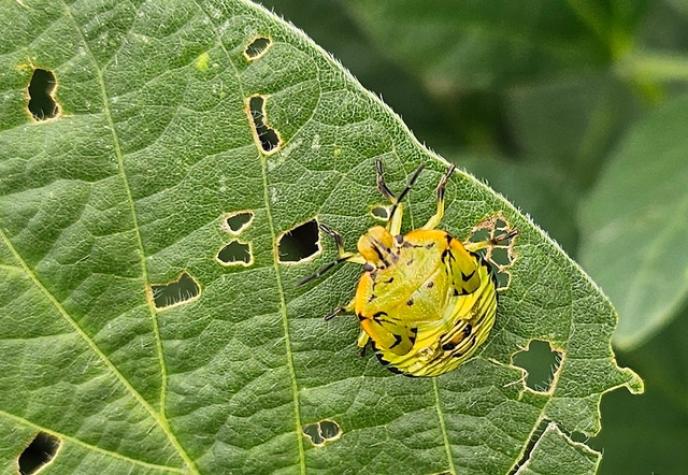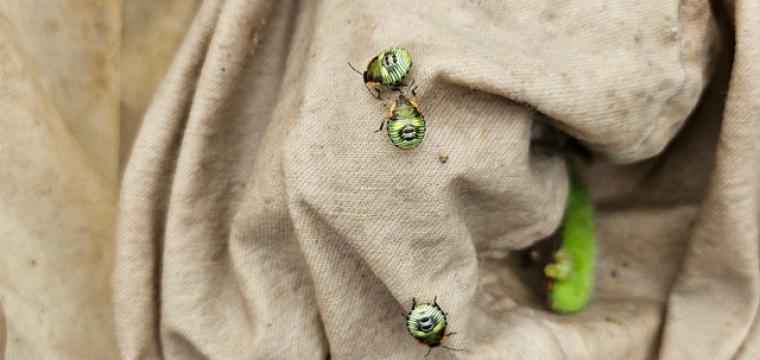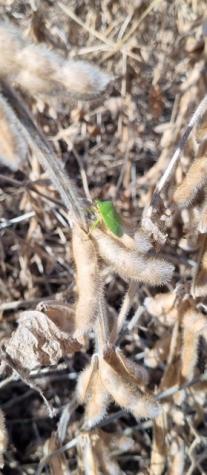COLUMBIA, Mo. – Missouri soybean farmers should be on the lookout for several species of stink bugs in 2025, says University of Missouri Extension state crops entomologist Ivair Valmorbida.
According to a 2024 survey, green stink bug was the most prevalent in Missouri soybean crops, accounting for a little more than 70% of the stink bugs. The one-spotted stink bug and brown stink bug are also present in Missouri crops, and they are similar in appearance. All overwinter as adults and emerge in the spring when temperatures and day length increase.
Stink bugs damage crops with their piercing mouthparts. They feed on blooms, pods and developing seeds within the pods. They can cause significant yield losses and reduce seed quality.
They vary in size and shape, but they are generally described as having shield-shaped bodies. Adult green stink bugs are usually light green. Eggs are barrel-shaped, change from light green to yellow and are usually found on the underside of the leaves.
Stink bugs move from field edges, and numbers increase during soybean reproductive growth stages. Females lay their eggs in masses; after hatching, young nymphs remain in the same area during their first instars. By fourth and fifth instars and adult stages, they move throughout soybean fields.
Valmorbida says insecticide application is warranted only when numbers and damage exceed thresholds. Based on sweep net samples, the threshold for grain soybean is 0.4 bugs per sweep (40 in 100 sweeps); for seed beans, it is 0.2 bugs per sweep (20 in 100 sweeps).
Valmorbida recommends weekly scouting when soybean begin to bloom. Some guidelines:
• Break large fields into units of 40-50 acres. Consider soil type, history of pest incidence and previous crop.
• Assess the whole field by walking in a U, X or W pattern. Avoid good or bad spots in the field that may not be representative of the overall field.
• Start sampling at a different location each time you scout.
• Avoid sampling only at field edges.
• If you find an infested area, try to determine whether it is isolated or widespread.
MU’s Pest Monitoring Network offers free text alerts to notify farmers when insects are active in specific locations. To sign up, go to Pest Monitoring Network or email ipm@missouri.edu.
Photos
Stink bugs vary in size and shape, but they are generally described as having shield-shaped bodies. Adult green stink bugs are usually light green. The barrel-shaped eggs change from light green to yellow and are usually found on the underside of the leaves. They can cause significant yield losses and reduce seed quality in soybean. Photos by Ivair Valmorbida, University of Missouri Extension crops entomologist.


